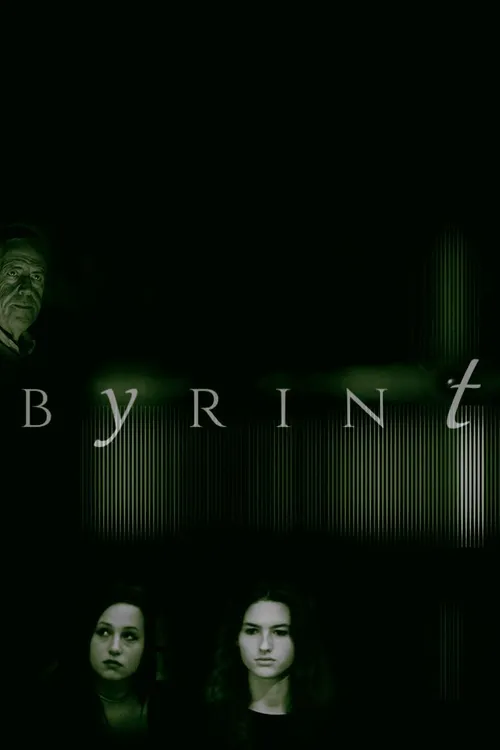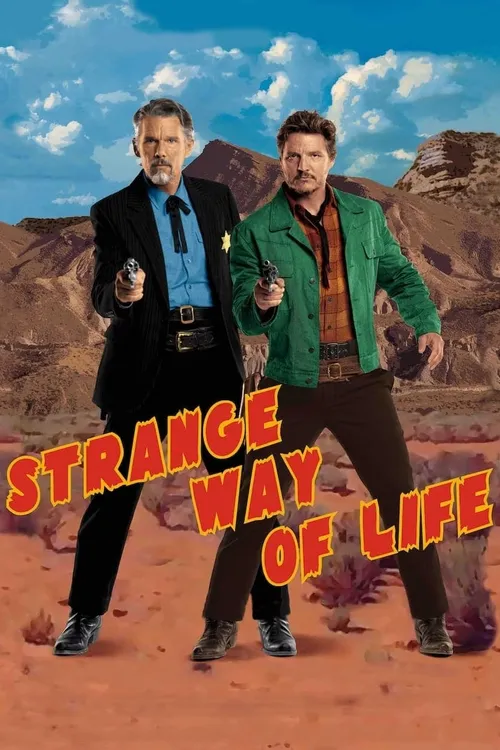
Labyrinthus: The Way of Not Being
Labyrinthus "THE WAY OF NON-BEING Deductions 1) This is a film that was born and developed in the spirit and in the perspective of not paying duty to any genre, understood as a cliché, but we can say that recognizing in its plot a sort of sacrificial plant could approach (derivatively) the classic genre of tragedy (Euripides in particular, which shares a certain impiety, in addition to the marked philosophical warping). Closer to home, because of its sacrificial (tragic) structure, I would liken it as a "genre" to "The Seventh Seal" or "Meet Joe Black", in which death is, respectively, externalized and internalized, but still acts with the aim of obtaining the sacrifice due to it. 2) In our intentions it would be the first step of a dialectical trilogy (that's what I think we'll call it in the end), through which we represent the external life/death splitting. This would be followed by the inner splitting ("we are and we are not what we were before"), set in the era of COVID, and finally by a kermis in four distinct episodes (two realistic and two surreal), coagulated around the idea of a spectator unaware of the fact that he is, himself, an element of the "show" he is witnessing, and this last step would be understood as that of reunification, determined by a sort of aesthetic self-motion (the three films, precisely). 3) The film opens with a passage from Parmedides (from the "Poem on Nature"), and this is the source of its title. In our intentions, the film is also an open disavowal of Parmenides himself, in the sense that non-being (death, appearance) can at least be represented by drawing on an internal apperception. The sentence pronounced at the end of Riccardo's character (" If the living and the dead could meet, no one would believe in the existence of God") is not to be understood as a trivial hypothesis of denial of God himself (who can affirm or deny with certainty the existence? ) but it is nothing more than the transposition, in synthesis, of the synesthesia proposed by the film: that is, the contextual perception of life and death interacting with each other; and therefore should be understood in the sense that, if we admit to perceive and share a synesthetic reality (made of real plus unreal) it would no longer make sense to search for a unity external to thought. 4) The "Way of non-being" is the beginning of simultaneous perception (life/death, reality/appearance) or the synaesthetic way. It is also the way of critical consciousness that came out of Kantian irremediable dualism and landed in Hegel. On this path, it is possible to draw knowledge. On the other hand, understood in its aspect of "visual art", the film exhibits that imponderable which, not by chance, in impressionistic painting was externalized by light (the material source of cinema itself) and is now drawn within and represented as a gap in consciousness. 5) The structure of the film is at the same time a labyrinth and a red thread to get out of it (synesthesia also in this). The unknown of the sense is the enigma to be unveiled (the minotuar to be killed) and the labyrinthine structure is the result of a montage remade four times, always in a different way until the final one; the montage itself is the solution of the enigma, as a sort of its dialectical solution. In order to better understand it, we can compare the film to other works such as "The Cube" or "Saw-The Riddler", in which the labyrinth is all externalized, and the solution of the enigma is entrusted to the characters (most of whom succumb), with the difference that we have overturned exactly those scenic devices: the labyrinth is all interior, perceptive, or rather it is in the sole perception of the spectator or of the addressee, and not of the characters, because it is the spectator who is dispersed in rivulets and accesses that include images, dialogues and memories, all included in that ball that, as the narration proceeds, unravels little by little until the final solution, and the characters simply undergo that inexorable (tragic) unfolding. In other words: the film is a labyrinth that places at its center an enigma, its "minotaur", and the enigma is revealed as the ball of memory is unraveled. The title of the film was in fact "The final color of the soul", intended as the memory (the final color) that remains in the dead (hence the final reading of the passage from Plato's "Republic", and more precisely from the account of the myth of Er) but which is then diluted by drinking the water of the river Amelete to erase it and reincarnate. The editing of our film is the unraveling of that ball of yarn and thus resolves the labyrinthine enigma, that is, it erects the sense of the story, which is a search for the sense of death.
| https://123moviesss.site/labyrinthus-the-way-of-not-being-2-590541 |
| Labyrinthus: The Way of Not Being |
| https://cdnvod.n2olabs.pro/poster/590541/912ecdf25098ce5823462de36ef8137d.webp |
| 2023-07-25 19:38:11 |
| Giuseppe Berlendis, Giuseppe Brittanni, Elena D'Amici, Chiara Gasparini |
| 5.2 |
| 0 |





















